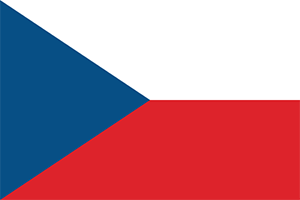Country examples of practice
The Agency collected and summarised concrete examples of learner, family and community participation, primarily in educational contexts. These examples showcase ways that countries have integrated learner and family voices into decision-making at national, regional and local levels. They do not indicate ‘best practices’, but they share different approaches to involving learners and families in building inclusive education systems.
Note: country examples may differ slightly in their usage and definitions of some terms and phrases. Please refer to the Agency glossary for general definitions.
Use the provided search filters to narrow down examples by country, system level, topic area, target group and framework element. Click the 'Reset' button to clear the selected filters. Please contact secretariat@european-agency.org if you would like to see or provide examples from an Agency member country that is not included.
This programme was designed to ensure children and young people are actively involved in on-going self-evaluation activities leading to school improvement by:
- taking part in reciprocal visits to other schools to identify what is working well, areas for improvement and effective practice;
- promoting ways that children and young people can be involved in school improvement activities in their own school.
In April 2020, shortly after the Irish Government decided to close all schools, the Department of Education established an Advisory Group to advise the Minister for Education and the State Examinations Commission on altered arrangements for the running of annual state examinations, learner certification and related issues.
The ‘Pre-placement Intervention’ programme was developed in response to the observed needs of parents who face challenges related to learners’ behaviour and emotions. Six educational institutions for learners identified as having emotional and behavioural disorders (EBD) implemented the programme in the scope of the ‘Professional Centre for the Treatment of Children and Adolescents with Emotional and Behavioural Disorders’ project, co-funded by the Republic of Slovenia and the European Social Fund.
The ‘A school, a village, an educational community’ initiative is located in the rural agricultural community of Alpartir (population: 600), around a small primary school with 41 learners (aged 3–12, 30% are not Spanish) and five teachers. The initiative aims for full inclusion, involving the whole community in the children’s education.
Sweden recognises that school safety means that learners can attend school without worrying about being violated, bullied or otherwise treated badly. If a school is designed for those who are most vulnerable, then the school will be safer for all learners.
This two-phase pilot project aimed to improve mental health support for children and young people with learning disabilities, autism spectrum conditions and/or challenging behaviour. It sought to reduce inappropriate school exclusions and avoidable hospital admissions, and to increase staff and parent confidence.
The Flemish government recognised there was a need for an organisation providing expertise on disability to inform policy development. To address this, the government launched a pilot programme, establishing a Flemish advisory and policy participation council of persons with disabilities to represent a diverse range of people and organisations.
The National Pedagogical Institute of the Czech Republic performed an experimental verification of ‘Systematic Support of Civic Education in Schools’. In the Czech Republic, self-governing learner parliaments can be established at schools to prepare learners for life in a democratic society and contribute to the schools’ democratic climate.
The national initiative ‘Pupil consultation in the Right to Learn programme’ contributed to the preparation of a legislative proposal which aimed to consolidate the use of positive discrimination funding in early childhood education and care and comprehensive school education in Finland. Learners were asked for their opinions on the need for positive discrimination financing in schools and on the desired outcomes and purposes of funded activities.









